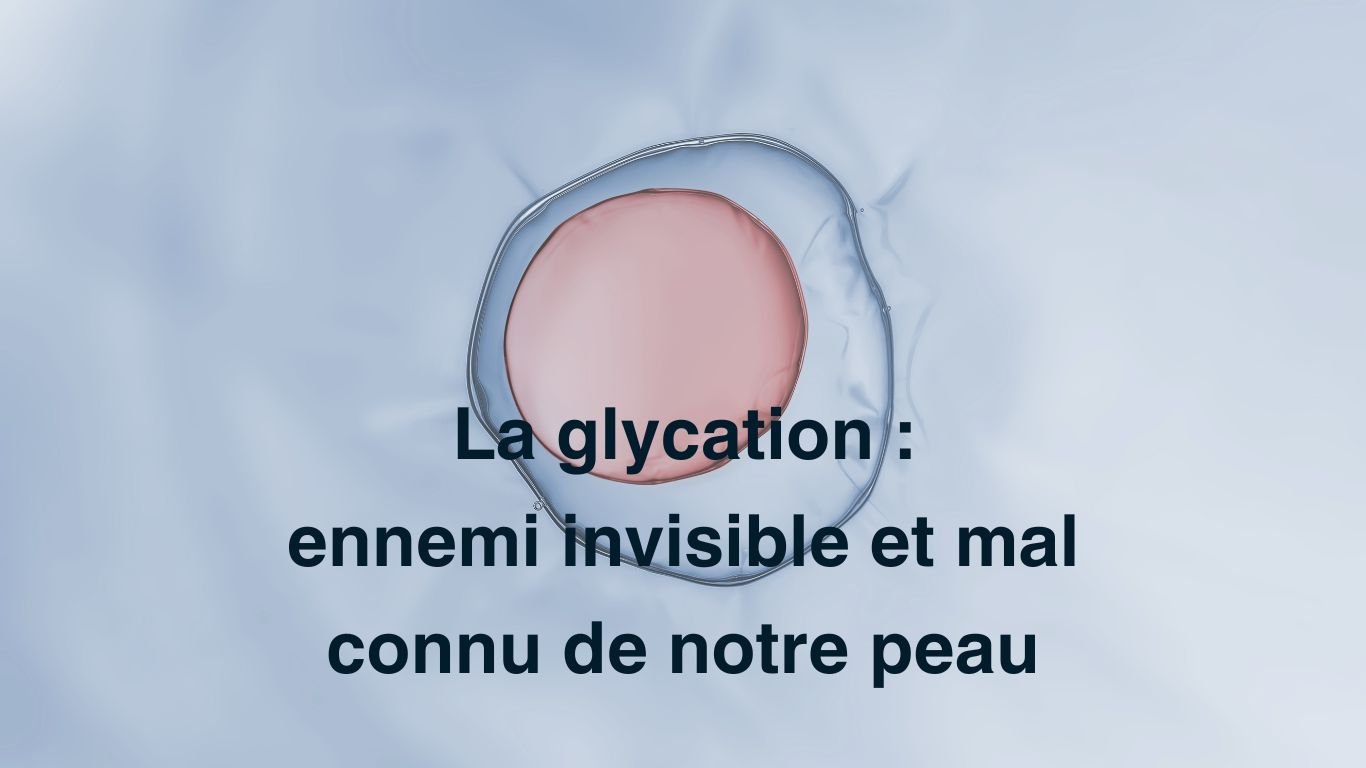Mystical, inevitable, implacable: there is no shortage of qualifiers to talk about aging and have always been imbued with a certain fatalism.
This way of seeing the journey towards age has, however, evolved in the light of successive scientific discoveries.
Since the industrial revolution, the battle to push the boundaries of comfort has evolved to offer new and sometimes even revolutionary perspectives.
It is enough to note the surprising results of experimental treatments such as those developed by Calico laboratories to realize that we are at the dawn of a significant increase in life expectancy and an unprecedented extension of youth. .
But while waiting to see you celebrate, without wrinkles or fine lines to smile, three-digit birthdays, the MyPureSkin team invites you to delve into the cellular mechanisms at the origin of these discoveries and to benefit from the benefits of very real products , real anti-aging innovations of the moment.
What is aging?
A vast subject with multiple dimensions, the question of aging can only be properly addressed by confining its study to certain aspects of the process.
With regard to the skin, we can attempt to define aging by the “symptoms” visible to the naked eye that accompany it.
Seeing your skin age means noticing, among other things:
- Loss of flexibility;
- A loss of firmness;
- Loss of hydration;
- A loss of homogeneity of the complexion;
- A loss of effectiveness of defenses against oxidative stress;
- A loss of effectiveness of the topical immune system.

A veritable cascade of consequences occurring gradually, the aging process is synonymous with a more or less slow but certain degradation of the functions of the skin and therefore of its quality.
Beyond the skin organ, aging is accompanied by a plethora of other manifestations: loss of vitality, digestion difficulties, muscle and bone weakening, and many others.
This is the reason why progress in anti-aging medicine is welcome, but it is also and above all why the prevention of poorly controlled aging is the key to a good quality of life in the long term.
To achieve this, it is necessary to understand and explain this process, by diving into the heart of your cells.
Evolution and symbiosis: the human species in permanent evolution
The fruit of 7 million years of evolution, the contemporary human being could only appear at the cost of anatomical compromises and incessant adaptations to his environment in order to ensure his survival.
From the transition to bipedal walking to the development of advanced techniques and know-how in the field of cooking, its development is punctuated by technical but also biological revolutions.
This logic of adaptation is not specific to humans since it is found much earlier in their family tree.
Indeed, precisely because they share common origins with other species, human cells are the heirs of a specific type of microorganism: “eukaryotic” cells (containing a nucleus, as opposed to so-called “prokaryotic” cells). ”).

The process of permanent evolution to which these particular cells are also subject was the driving force behind a symbiosis a few billion years ago. This symbiosis was to forever impact the path that the development of the human species would later take: it involves the fusion with a very ancient bacteria that we today call “mitochondria”.
Mitochondria and cellular chemistry: story of a successful symbiosis
But why are mitochondria integrated into our cells and what does this have to do with aging?
Following a logic identical to that which provided us with thumbs (adapting to better survive), our symbiosis with the mitochondria is explained by one of the marvelous functions that it offers to our body: that of producing energy. 'energy.

Far from being confined to this role, the mitochondrion is involved in many other aspects of cellular life, but it is on this aspect that the aging process appears to have a very perceptible impact.
The mitochondria during aging: a cellular organelle that shines through its dysfunction
If the aging process results, among other things, in a decline in vitality, this is partly explained by the decline of the mitochondria, responsible for energy production (in the form of a molecule known as Adenosine Tri-Phosphate or “ATP”, from sugar molecules, thanks to a series of reactions called “Krebs cycle”).
This progressive deterioration is a consequence of a process that is still poorly understood within the human body: protein glycation.
Glycation in question
Known for its use as a marker of progression of the condition of diabetic people, glycated hemoglobin is an example of the fate reserved for the proteins making up red cells, once they have been subjected to glycation.
Occurring naturally, protein glycation of the constituents of our cells increases in frequency over time.
From a chemical point of view, this is a form of “maillard reaction” (which we see, for example, when a piece of meat turns black due to overcooking). The key characteristic of this type of chemical reaction lies in the attachment of a sugar to the protein concerned.
In the case of a protein making up a cell of the human body, this reaction leads to a loss of part of the functions of the affected protein which then becomes a “glycated protein”.
Such a protein compromises the integrity of the structure of which it is part and which it composes (as is the case for a protein making up the membrane of a cell, or even for a collagen protein).

To the naked eye, this process applied for example to skin tissues results in a loss of resistance, which contributes, among other things, to skin sagging, since certain key proteins of the epidermis and dermis (such as collagen) are affected by this phenomenon.
From skin to vitality: glycation at the heart of aging
Therefore constituting one of the central processes of aging with oxidation (caused by oxidative stress), glycation is one of the sources.

Wrinkles and fine lines but also depigmentation (as seen in the case of the appearance of vitiligo for example) or even difficulties in healing: the list of consequences of glycation is long.
Furthermore, it is precisely because the mitochondrion is involved in the metabolic reactions of cell respiration that it gradually becomes prey to cellular disturbances caused by glycation as time passes.
In a 2008 publication (1), researchers Naila Rabbani and Paul J. Thornalley report on the damage caused by the glycation of mitochondrial proteins responsible for the production of ATP (the “energy” molecules used by cells). ).
We discover that the mitochondrion is prey to an oxidative stress that increasingly disrupts its functioning (which impacts, among other things, vitality) and that this oxidative stress is precisely caused in large part by... glycation of mitochondrial proteins!
Glycation in the human body: what sources and how to protect against it?
In small proportions, the phenomenon of protein glycation within the body is necessary since it creates a balance within cell populations.
Unfortunately, this phenomenon can accelerate the aging of the body when it is too severe.
Even more serious, a diet too rich in refined products and industrial dishes creates a sugar intake that is too high to be managed by the natural regulatory mechanisms of the human body.
It is through studies such as that published by the team of researcher Fabrizio Guarneri in 2021 (2) that it becomes possible to understand a little better the extent of the damage caused by early glycation of cells.
In particular, we learn about the profound impact on skin health of the end products (from the glycation reaction) represented by glycated proteins and their “waste” (these end products are designated under the term “AGEs”, an English acronym for “ Advanced Glycosylation End-products”).
The conclusions of this study fall into two main aspects:
- A confirmation of the results of previous studies on the preponderant role of AGEs molecules in the development of skin diseases and the risks of premature aging of the skin;
- Highlighting the promising avenues that could be represented by the manipulation of RAGEs (a particular type of receptor for AGE molecules) with functions that are still too little known (but which we know are precisely involved in the appearance of the aforementioned problems) .
It is also becoming more and more clear that the “classic” receptors for AGEs molecules (we call them AGERS), responsible for detoxifying the body, are relayed by RAGEs receptors, when they are no longer capable of fulfill their role.
The fundamental problem posed by this “passing of the stick” is that RAGE receptors seem to be at the origin of the triggering of inflammatory reactions, themselves the source of the skin diseases mentioned above.

Building on such results, engineers in the anti-aging industry have become aware of the importance that an anti-aging nutricosmetic could have that can accompany dietary rebalancing in order to prevent or even avoid premature aging of the skin.
Even more, it becomes obvious that a food supplement that wants to be truly effective must target the harmful effects of oxidation and glycation within the body.
It is on the basis of this approach that teams of professionals such as those working within the MyPureSkin laboratories have developed the batch of flagship active ingredients found in some of the most powerful nutricosmetics on the market.
MyCollagenRepair: when anti-aging medicine helps you preserve the achievements of evolution
If the mitochondria and the natural mechanisms allowing your body to benefit from a certain vitality and natural protection for your skin, your genetic heritage as a human being has not been able to evolve as quickly as the consumption patterns of our contemporary societies. .
It is with a view to preserving the health of your skin and supporting it over the long term that MyPureSkin collaborators have developed a range of anti-aging nutricosmetics of exceptional quality within which is MyCollagenRepair.
A product of Swiss know-how and the latest discoveries in the field of anti-aging medicine, the MyCollagenRepair formula contains a synergy of carefully selected active ingredients to nourish your skin from the inside while helping to reduce the development of both dangers for your youth:
- Oxidative stress;
- Glycation.
To achieve this, your next MyCollagenRepair treatment will give you the benefit daily, in a simple dose (powder sachet and glass of water):
- Vitamins C and E, extremely effective antioxidants;
- Coenzyme Q10 and SOD (Super Oxide Dismutase), the keystone of a protection system against free radicals from inside and outside the cell;
- Rosmarinic acid and silymarin, working both upstream and downstream of the glycation process to prevent and reverse it (anti-inflammatory actions on RAGEs receptors, offering anti-glycant and deglycant properties);
- Hyaluronic acid offering the skin a source of hydration (thanks to the capacity of this principle to carry 1000 times its mass in water);
- Marine collagen peptides, the presence of which allows you to support and stimulate your own collagen production within your body;
- Bioperine, piperine extract, capable of increasing the bioavailability of other active ingredients in order to take maximum advantage of the benefits of MyCollagenRepair.
Focused on exclusively natural sources, the extraction and formulation of MyCollagenRepair ingredients is part of a holistic perspective, celebrating the health of those who choose to trust the MyPureSkin laboratory team.
Milk thistle, Acerola, black pepper, melon, fish... you can't go wrong by deciding to try your first 3-month treatment with MyCollagenRepair.
Ready to take the plunge to enjoy the years to come? Change your life today with a meaningful health routine.
- Research by Rabbani and Thornalley relating to the impact of glycation on mitochondrial energy production: https://www.ncbi.nlm.nih.gov/pmc/articles/PMC2639773/
- Guarneri's study on the role of AGE molecules and RAGE receptors in the development of skin diseases: https://www.ncbi.nlm.nih.gov/pmc/articles/PMC7827747/





Share:
Ampoule, injections or cream: how to better benefit from the benefits of biotin?
Coenzyme Q10: why is it so important?